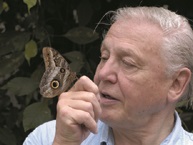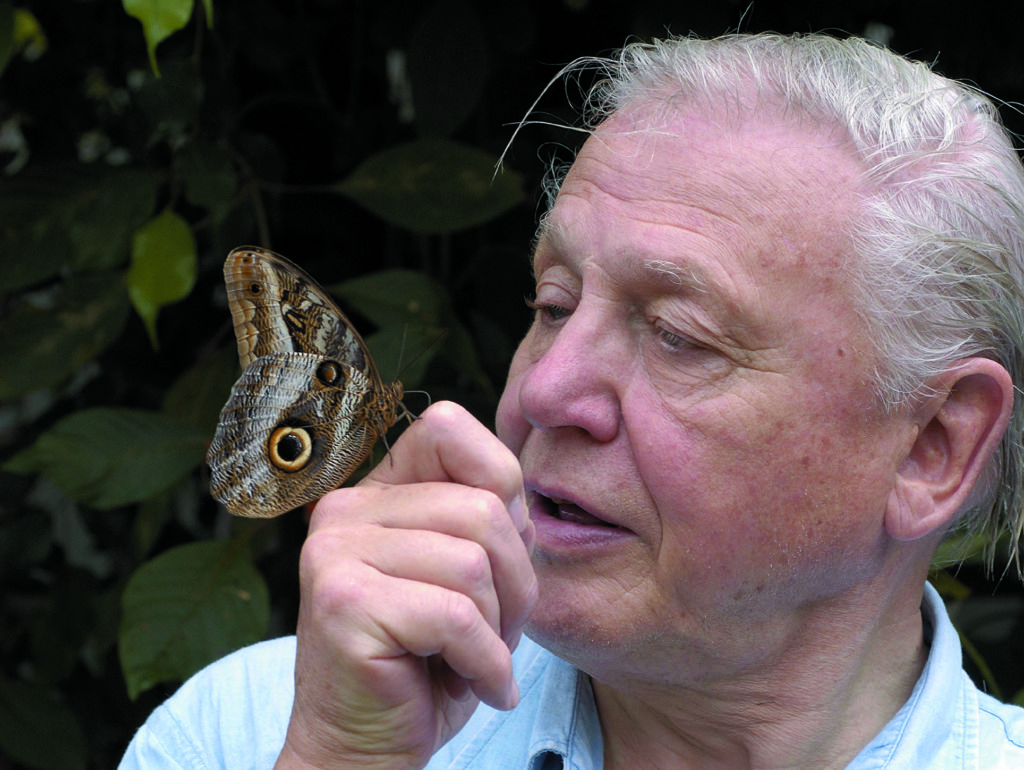Skip to:

Aims and Scope
As the Bulletin of the Royal Entomological Society (RES), Antenna publishes a broad range of articles. Articles submitted to Antenna may be of specific or general interest in any field related to entomology. Submissions are not limited to entomological research and may, for example, include work on the history of entomology, biographies of entomologists, reviews of entomological institutions/methodologies, and the relationship between entomology and other disciplines (e.g. art and/or design).
Antenna also publishes Letters to the Editor, Opinion Pieces, Meeting Reports, Society News, Obituaries and other items (e.g. selected Press Releases). It includes details of upcoming entomological meetings in its Diary section and features information and reports on RES activities including National Insect Week, Insect Festival and National, Regional and Special Interest Group meetings. Details of RES Awards and recipients are also covered.
Book, website, app or other media are also reviewed and published by Antenna. These are published online, but do also occasionally appear in printed issues.
It is not necessary to be a Member or Fellow of the Society to submit – we welcome any submissions.
Submissions should be made via email to: antenna@royensoc.co.uk. Further details below.

Readership
Antenna is distributed quarterly to all Members and Fellows of the RES, as well as other independent subscribers. After a period of 5 years of exclusive membership access, complete issues are published online on the Antenna webpage for a further 5 years to help raise public awareness of the RES and its activities.

Instructions for Authors
Standard articles are normally 1,000–3,000 words in length, although longer submissions may be considered with prior approval from the Editorial Team.
The length of other submitted copy (e.g. Letters to the Editor and Opinion Pieces) is generally 500 words or fewer, and should not exceed 1,000 words.
The use of full colour, high quality images is encouraged with all submissions (see Image Guidance below). As a guide, one image per 500 words is typically included with a standard article, but submission of more would be welcome so that we have a choice.
We can only publish obituaries of entomologists who are Fellows or Members of the Society and have made extraordinary contributions to entomological science and/or the Society. Obituaries will not normally be more than one page long (up to 750 words and a photograph). Please discuss with the editors before writing an obituary.
Style guide
This style guide deals only with the most commonly occurring issues. Following this guide will save the editors time and will be much appreciated. Some links to the Plain English Campaign are given where elaboration might be useful. Where Word underlines your writing in red or blue, try to correct it so that the underlining disappears.
Species names
When naming an organism, at first mention give the Latin name in full and the capitalised vernacular name if appropriate in brackets. There is no need to name the species authority.
E.g., Lasiocampa quercus (Oak Eggar).
After first mention use initial letter of genus unless starting a sentence, in which case use full genus name.
Please capitalise the vernacular name if it belongs a precise species. Use lower case initials if the precise species is not mentioned.
E.g.: Crack Willow vs. willow.
Article titles and headings
For your article’s title, please use capital initials for key words before any colon, and a capital initial just for the first word after a colon. There should be no full stop at the end of the title.
E.g., Writing an Article for Antenna: Refer to the style guide
When listing authors, we do not usually include post-nominals after their names. We encourage inclusion of affiliations and, if desired, contact email addresses for at least the lead author.
An example is provided below:
Some Flies Steal from Nectar-rich Plants: Robber flies active in Sherwood
Robin Hood1, William Scarlet2 and Maid Marion3*
1Sherwood Forest, Nottingham, UK
2University of Nottingham, UK
3Nottingham Trent University, UK
*Department of Forest Entomology
Nottingham Trent University
50 Shakespeare St
Nottingham NG1 4FQ
UK
maid.marion@emaildomain.co.uk
Subheadings
When using subheadings within your text, please use a capital initial on the first word only.
E.g., Applying the style guide to this article
References
Citations should be bracketed within text, without numerical listing.
In the text
Put citation reference strings in date order, not alphabetical order. If more than one shares the same year, put those in alphabetical order. Some examples are provided below:
According to Pope et al. (2022), Harper Adams University produces excellent entomologists.
Harper Adams University produces excellent entomologists (Pope et al., 2022).
Aphids are considered by many to be the world’s most economically important pests of arable crops (Blackman, 1972; Eastop, 1972; van Emden, 1976; Tatchell et al., 1986; Harrington et al., 2010).
In the reference list
The reference list should be ordered alphabetically. If more than one share the same authorship list, these should be put in date order. Two authors should be split with ‘and’.
To save space, for more than two authors Antenna uses ‘first author (et al.)’ and does not give the title of papers. It does give the title and publisher of books.
A’Brook, J. (1983) EPPO Bulletin 13, 229–233.
Hardie, J. and Tatchell, G.M. (1989) Entomologia Experimentalis et Applicata 52, 451–458.
Harrington, R. et al. (2007) Global Change Biology 13 1550–1564.
Heathcote, G.D. (1972) Evaluating aphid populations on plants. In: van Emden, H.F. (ed.) Aphid Technology. Academic Press, London, pp 105–177.
van Emden, H.F. and Harrington, R. (eds) (2017) Aphids as Crop Pests (2nd Edition). CAB International, Wallingford.
Grammar, spelling and punctuation
If in doubt, please refer to the guidance provided in the General and Grammar guides available here:
http://www.plainenglish.co.uk/free-guides.html
Please use British English spellings.
E.g., -ise, not -ize.
Capital and lower-case initials
Please see this guide to the use of capital and lower-case initials.
E.g., The society….; The president….; The trustees….; The world….
Speech marks and inverted commas
Use “…” only for direct quotes.
Use ‘….’ To define words or terms, or to suggest colloquialism.
E.g., The president said, “we must ensure that we enrich the world with insect science”.
The president said that we must enrich the world with insect science.
The word ‘enrich’ requires qualification.
He observed that ‘the chickens were coming home to roost’.
Commas in a list
Do not include a comma before the ‘and’ preceding the last item in a list, unless it is required to avoid confusion.
E.g., He said this, that and the other.
Bullet points
Please see this guide to punctuating bullet points.
Italics
Put all non-English words in italics.
Put all publication names in italics.
E.g., Here, I will provide an example, e.g., one should italicise i.e., and one should italicise publication names such as Antenna.
Hyphen or dash?
Please see this guide to the use of hyphens.
Use a dash (en-dash) if it could be substituted for ‘to’ or ‘between’.
E.g., pages 19–24; the years 2013–2019; insect–plant interactions.
Data
‘Data’ is a plural word. E.g., The data are reliable.
Referring to the Society
Below are some examples of how to refer to the society and membership of it in different contexts.
I am a member of the Royal Entomological Society.
I attended a Royal Entomological Society meeting.
I attended an R.E.S. meeting.
A RES stand was installed at the event.
The society’s aim is to ….
Ten Fellows and ten Members were in attendance.
Twenty members were in attendance. (Here, ‘members’ refers to all categories of membership.)

Image Guidelines
It is the responsibility of authors to ensure that any necessary image permissions are obtained, and that credits are applied as appropriate in the figure legends.
To maintain a high print quality, we suggest that submissions for Antenna be sent via e-mail or remote file transfer in common picture formats (e.g., jpeg, giff or tiff). Original sizes or at least 300dpi resolution are recommended. Electronic images can be embedded in the Word document, but we will also require separate electronic images. These should be the full-size image from the camera.
If an image is intended for the front cover, then the photograph should be in portrait format and again should be the full-size image from the camera.
To give an idea as to what happens when the image is not of sufficient size, take a look at the two photographs below. One is 300dpi and the other is 72dpi.
 72dpi
72dpi
 300dpi
300dpi

Page Charges
With the exception of advertising material, there is no charge for publication in Antenna. All articles, including images, are published free-of-charge in full colour, with publication costs being met by the RES for the benefit of its membership.

Review and Publication Process
All submissions are reviewed and, where necessary, edited ‘in-house’ by the Antenna Editorial Board, though specialist external review may be sought in some cases (e.g., for submissions that fall outside the Editorial Board’s expertise). Receipt of submissions will be provided by email, with submitting authors of accepted articles being offered the opportunity to review PDF proofs prior to publication. Where appropriate, authors will be requested to revise manuscripts to meet publication standards.

Submission Process
All submissions should be sent electronically to antenna@royensoc.co.uk, preferably in MS Word format with images sent as separate files (see above). Image captions and figure headings should be included either with the text, or as a separate file.

Editorial Board
Editors: Richard Harrington, Dafydd Lewis and Jane Phillips
Editorial Coordinator: Jennifer Banfield-Zanin (RES)
Consulting Editor: Jim Hardie (RES)
Associate Editors: Jesamine Bartlett, Andrew Boardman (University of Hertfordshire), Benjamin Chanda (PATH, Zambia), Kimberly Gauci (Open University, Malta), Adam Hart (University of Gloucestershire), Louise McNamara (Teagasc, Ireland), Sajidha Mohammed (University of Calicut, India), Moses Musonda (Broadway Secondary School, Zambia), Claire Price (Harper Adams University), Stuart Reynolds (University of Bath), Yanet Sepúlveda De La Rosa (University of Sussex)
Contact us: antenna@royensoc.co.uk
